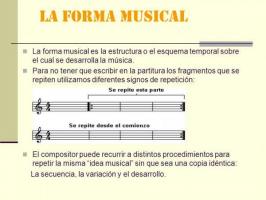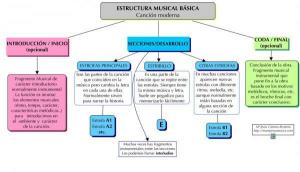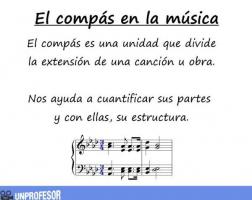Musical intervals: classification and examples

Every system is composed of many elements that have a certain relationship with each other, it is this organization that defines its characteristics, its qualities and its way of functioning. Music is also a system, one based on numbers and proportions. We know all this thanks to years of history, evolution and characters who have worked hard to discover the mysteries of the laws in the physics of sound.
In this lesson from a TEACHER we will talk about one of these basic components of music: musical intervals. We will discover what they are, what they are and their importance in music theory.
In music, an interval refers to the distance between one note and another. As you may already know, with the notes we can create melodies thanks to the fact that they have a tuning.
The tuning is how high (high) or low (low) is a note and this can also be determined relative to other notes in the same work or song, so to find an interval we must know at what tuning distance you will find these notes.
In music we have
7 musical notesWhat are they Do, Re, Mi, Fa, Sol, La and Si, in this specific order. From Si, the notes are repeated again. If you see a piano you will see that there are many keys, each of those keys is a different note. Even though two notes have the same name, if the key is different, its pitch will be different.In addition to the 7 main notes, we have the alterations (sharps and flats) that change their tuning. On the piano it is very easy to visualize these notes. The white keys are the 7 main notes, while the black keys are the accidentals of these notes.
In order to find the interval between one note and another we must count how many tones are between them. The musical toneis the measure we use for the intervals. The distance between one key and another is a semitone (half of 1 tone). This means that there is 1 tone every two keys.
We can also think that there is 1 tone as long as the white keys have a black key in between. If there is no black key between two white keys, there is only one semitone.
- For example: If we place ourselves on the key Do of the piano. The next white key is Re, and between Do and Re there is a black key, this means that between C and D the interval is 1 tone.
- Another example: If we see the key Me, we will see that the next key is found immediately and that there is no black key in between. This next key is Fa, so we can say that between E and F the interval is 1 semitone, or half a tone.

Image: Online music school
Knowing how to count the distance between one note and another, we can begin to name the musical intervals. Each number of tones receives a name depending on the distance, so to know an interval only we must find the number of tones there are.
These are the names of the intervals by the number of tones:
- ½ tone = semitone (2b)
- 1 tone = second (2)
- 1 tone and ½ = minor third (3m or 3b)
- 2 tones = third (3)
- 2 tones and ½ = perfect fourth or fourth (4)
- 3 tones = fourth augmented or fifth diminished (5b)
- 3 tones and ½ = fifth or fifth fair (5)
- 4 tones = augmented fifth (5+)
- 4 tones and ½ = sixth (6)
- 5 tones = minor seventh (7m or 7b)
- 5 tones and ½ = major seventh (7)
- 6 shades = eighth (8)
Musical intervals that exceed the eighth
* Observation: depending on the situation, sometimes the sixth is called diminished 7 (7bb).
We call the intervals that exceed the octave "tensions" and they are notes widely used in musical styles such as jazz. These are:
- Ninth (9) one second above the eighth
- Eleventh(11) a fourth above the eighth
- Thirteenth(13) one sixth above the eighth
With these data we can already know the intervals and call them by their names. For example: "Sol is the fifth of Do". We know this because between the key of C and G there are 3 tones and ½.
Intervals are a basic concept that we must know in music as a foundation. Intervals serve us for crucial things, such as chord construction. This is because to create a chord we need to know the compatibility that some notes have with others and we know this thanks to the intervals.

Image: Lapnay



